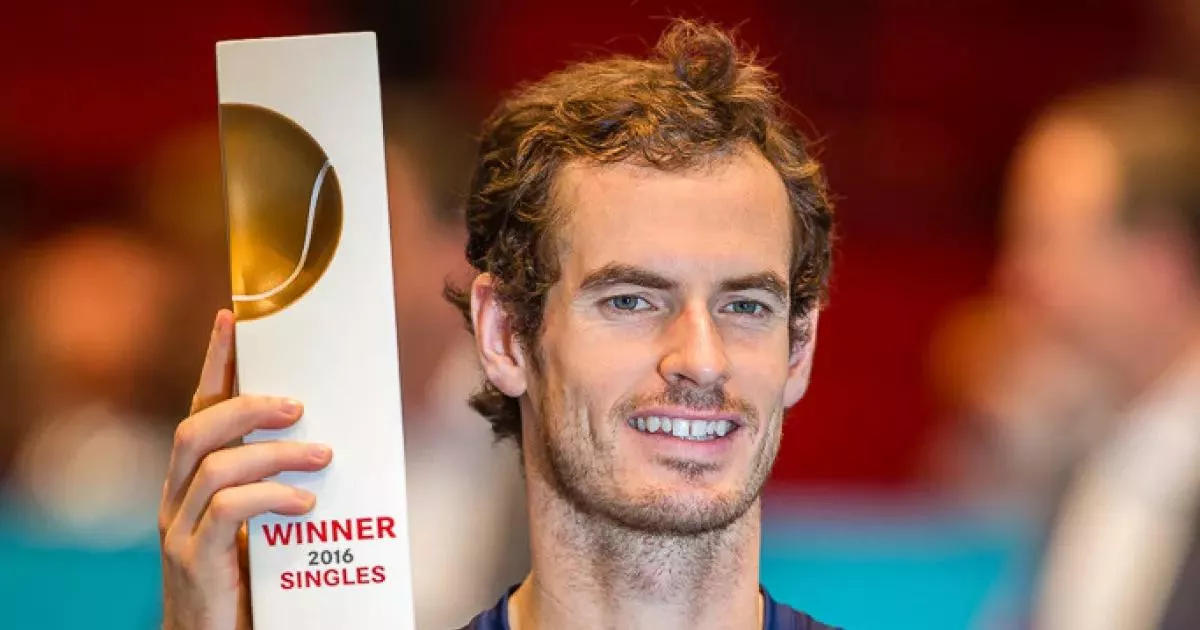Andy Murray is a highly accomplished British former professional tennis player. He achieved the world No. 1 ranking, holding it for 41 weeks and finishing as year-end No. 1 in 2016. Murray's career highlights include 46 ATP Tour-level singles titles, featuring three Grand Slam victories: the 2012 US Open and the 2013 and 2016 Wimbledon Championships. Furthermore, he secured two Olympic gold medals, won the 2016 ATP World Tour Finals, and triumphed in 14 Masters events. In total, Murray competed in eleven major finals, solidifying his status as one of the sport's elite players.
1908: First British man to win the Olympic singles gold medal in tennis
In 2012, Andy Murray became the first British man to win the Olympic singles gold medal in tennis since Josiah Ritchie in 1908.
1931: First British man since George Patrick Hughes in 1931
In 2016, Murray won the Internazionali BNL d'Italia becoming the first British man since George Patrick Hughes in 1931.
1936: First British man to win a Grand Slam final since Fred Perry
At the US Open, Andy Murray beat Djokovic in five sets, becoming the first British man to win a Grand Slam final since Fred Perry in 1936.
1936: First British winner of the men's singles title since Fred Perry
In 2013, Andy Murray overcame Djokovic to become the first British winner of the men's singles title since Fred Perry in 1936 and to extend his winning streak on grass to 18 matches.
1936: First Davis Cup title since 1936
In 2015, Andy Murray ensured a 3–1 victory for Great Britain in the Davis Cup final, their first Davis Cup title since 1936.
1937: First male British player since Bunny Austin in 1937, to reach a French Open final
At French Open 2016, Murray defeated Wawrinka to become the first male British player since Bunny Austin in 1937, to reach a French Open final.
1938: British Winner at Queen's
In 2009, Murray became the first British winner of the Queen's tournament since 1938.
1938: First British Male player at Wimbledon final
In 2018, Andy Murray beat Jo-Wilfried Tsonga in the semi-final in four sets to become the first male British player to reach the Wimbledon final since Bunny Austin in 1938. In the final, he lost to Federer in four sets.
1971: First British player since Virginia Wade in 1971 to win the title
In 2016, Murray won the Internazionali BNL d'Italia becoming the first British player since Virginia Wade in 1971 to win the title
1973: Ranking Introduction
In November 2016, after Djokovic lost to Marin Cilic and Raonic withdrew before the start of their semi final match at the Paris Masters, Murray became the first British man to reach No. 1 since the introduction of the rankings in 1973.
1976: First Briton since Buster Mottram to win a tour level clay court event
In 2015, Andy Murray became the first Briton since Buster Mottram in 1976 to win a tour level clay court event.
1977: Virginia Wade's Major Win
In 2012, Andy Murray became the first British major singles champion since Virginia Wade in 1977.
1981: Davis Cup semi-final
In 2015, Andy Murray helped Great Britain reach their first Davis Cup semi-final since 1981, by beating Jo-Wilfried Tsonga, and his brother Jamie won the doubles.
1986: Davis Cup Quarter-Final
In 2014, During the Davis Cup World Group first round, Andy Murray won both of his ties, helping Britain to their first Davis Cup quarter-final since 1986.
1988: Tied the longest final in the US Open history
At US Open in 2012, Murray's final win against Djokovic tied with the 1988 US Open final (in which Murray's coach Lendl competed) as the longest final in the tournament's history.
1990: Most Wildcards Received since 1990
In 2023, at the Dubai Tennis Championships, Murray equaled the record of 53, for most wildcards received for a player since 1990, of former player Tommy Haas, who retired in 2017.
1995: Canadian Masters
In 2010, Andy Murray became the first player since Andre Agassi in 1995 to defend the Canadian Masters, defeating Nadal and Federer, ending his eight-month title drought.
1996: Dunblane School Massacre
In 1996, Andy Murray was present during the Dunblane school massacre where he took cover in a classroom. Thomas Hamilton killed 16 children and a teacher before shooting himself.
1997: Greg Rusedski Reached a Major Final
In 2008, Murray's US Open final appearance was the first by a player from Britain since Greg Rusedski in 1997.
1998: Leon Smith as Coach
From 1998, Murray was coached by Leon Smith.
1999: Orange Bowl Champion
In 1999, Andy Murray won the Orange Bowl, an international tournament for junior players, in the 12-year-old category.
January 2001: Petits As Tournament
In January 2001, Andy Murray participated in the Petits As tournament, where he defeated Novak Djokovic in the quarterfinals but lost in the final to Alexandre Krasnoroutskiy.
2002: David Nalbandian at Wimbledon
In 2005, Andy Murray lost to 2002 Wimbledon finalist David Nalbandian due to cramping and fatigue, having led two sets to love.
July 2003: Newest low ranking since he first entered the ATP rankings
In 2018, after Murray withdrew from Wimbledon, he dropped to 839th in the ATP rankings, his newest low ranking since he first entered the ATP rankings on 21 July 2003.
July 2003: Challenger and Futures Circuit
In July 2003, Andy Murray started out on the Challenger and Futures circuit, reaching the quarter-finals of the Manchester Challenger.
2003: Pato Álvarez as Coach
From 2003, Murray was coached by Pato Álvarez.
2003: Junior Ranking
In 2003, Andy Murray reached as high as No. 6 in the world as a junior.
July 2004: Challenger Event in Nottingham
In July 2004, Andy Murray played a Challenger event in Nottingham, losing to Jo-Wilfried Tsonga in the second round.
September 2004: Junior US Open Win
In September 2004, Andy Murray won the Junior US Open.
2004: Combined Rankings
In 2004, Andy Murray reached No. 2 in the world in the combined rankings.
2004: Leon Smith as Coach
Until 2004, Murray was coached by Leon Smith.
2005: Year-End Ranking and Award
Andy Murray completed the year 2005 ranked No. 64 and was named the BBC Scotland Sports Personality of the Year.
2005: First time on the Challenger Tour since 2005
In 2019, Andy Murray competed at the Rafa Nadal Open Banc Sabadell Challenger, marking his first time on the Challenger Tour since 2005.
2005: Injury
In January 2005, Andy Murray, ranked No. 407, injured his back and was forced to take three months off.
2005: Pato Álvarez as Coach
Until 2005, Murray was coached by Pato Álvarez.
2006: Reaction to World Cup Comments
Following comments made in 2006 about the World Cup, Andy Murray faced abuse, which contributed to his initial refusal to endorse either side of the debate in the 2014 referendum on Scottish independence.
2006: Mark Petchey as Coach
From 2005 until 2006, Murray was coached by Mark Petchey.
2006: Victory Over Federer
In 2006, Andy Murray became one of two players to defeat Roger Federer, breaking Federer's 55-match winning streak on hard courts at Cincinnati. He later broke into the top 20 for the first time.
2006: Controversial Remarks and Umpire Incident in 2006
In 2006, Andy Murray made a controversial remark after a match with Kenneth Carlsen, stating they "played like women", which led to him being booed. Later that year, Murray was fined for swearing at the umpire during a Davis Cup doubles match and refused to shake the umpire's hand.
2006: National Identity Comments at Wimbledon 2006
In 2006, prior to Wimbledon, Andy Murray's national identity became a topic of discussion after he jokingly stated he would support whoever England was playing in the 2006 World Cup due to teasing about Scotland's failure to qualify.
2006: Lost British No. 1 ranking
In March 2018, Murray lost his British No. 1 ranking for the first time since 2006, to Kyle Edmund.
2006: Full Circuit Competition
The 2006 season saw Andy Murray compete on the full circuit for the first time and split with his coach Mark Petchey and team up with Brad Gilbert.
2007: ATP World Tour Finals
At the ATP World Tour Finals in 2014, Murray lost his opening round robin match to Kei Nishikori but won his second match against Milos Raonic. He lost his final group match against Federer in straight sets marking his worst defeat since losing to Djokovic in the 2007 Miami Masters, eliminating him from the tournament.
2007: Brad Gilbert as Coach
From 2006 until 2007, Murray was coached by Brad Gilbert.
2007: Top 10 Debut
In 2007, Andy Murray made his top 10 debut on the ATP Tour at age 19.
2007: First meeting between Murray and Nadal
In 2007, Murray began playing against Rafael Nadal. They played 24 occasions, with Nadal leading 17–7.
2007: Match-Fixing Allegations
In 2007, following the investigation surrounding Nikolay Davydenko, Andy Murray suggested that tennis had a match-fixing problem, stating that everyone knows it goes on.
May 2008: Lowest Ranking Since May 2008
In 2017, As a result of his inactivity due to a hip injury, Andy Murray's ranking fell sharply to No. 16, his lowest ranking since May 2008.
June 2008: Fell outside of the top 10 rankings for the first time since June 2008
As a consequence of failing to reach a grand slam final in 2014, Andy Murray fell outside of the top 10 rankings for the first time since June 2008.
2008: Lowest ranking since 2008
At Wimbledon 2014, after his defeat at the Championships, Andy Murray dropped to No. 10, his lowest ranking since 2008.
2008: Australian Open and Ranking drop
At the 2014 Australian Open, Andy Murray went out in four sets in the quarters to Roger Federer. As a result, Murray fell to No. 6, falling out of the top 5 for the first time since 2008.
2008: Emergence of a Rivalry
From 2008, the tight competition between Murray and Djokovic led many to see it as an emerging rivalry.
2008: Grand Slam Quarter-final at Wimbledon
In 2008, Andy Murray made his first Grand Slam quarter-final at Wimbledon before making his first final at the US Open. He also suffered one of the worst defeats of his career, losing his first round singles match to No. 77 Yen-hsun Lu of Taiwan in straight sets at the Beijing Olympics.
2008: Murray Victory at ATP World Tour Finals
In 2008, Murray defeated Federer at the ATP World Tour Finals in Shanghai.
2008: Masters Shield in Cincinnati
In 2008, Murray won his first Masters shield in Cincinnati.
2008: Improving Clay Court Game
Starting in 2008, Murray worked hard on improving his clay court game.
May 2009: Highest Ranking for a British Male
On May 11, 2009, Andy Murray achieved the highest ranking of a British male in the Open Era when he reached the No. 3 ranking.
2009: Federer wins at ATP World Tour Finals
In 2009, Federer defeated Murray at the ATP World Tour Finals in London.
2009: Founding Member of Malaria No More UK Leadership Council
In 2009, Murray co-founded the Malaria No More UK Leadership Council with David Beckham and helped launch the charity.
2009: Wimbledon Fourth Round Victory
In 2009, Murray defeated Wawrinka in five sets in the Wimbledon fourth round, the first men's match played under the Wimbledon roof.
2009: Deal with Adidas
In 2009, Murray signed a five-year deal worth £10 million with Adidas, which included wearing their tennis shoes.
2009: ATP finals in Rotterdam and Indian Wells
In 2009, Nadal defeated Murray at Indian Wells, and Murray defeating Nadal in Rotterdam.
2009: Best Counterpuncher on Tour
In 2009, Paul Annacone described Murray as potentially the best counterpuncher on tour, emphasizing his defensive baseline play and ability to transition from defense to offense.
2009: First season since 2009 where Murray failed to reach a grand slam final
In 2014, Andy Murray failed to reach a grand slam final, first season since 2009. As a consequence Murray fell outside of the top 10 rankings for the first time since June 2008.
2010: Part of the Big Four
By 2010, Andy Murray had joined Roger Federer, Rafael Nadal, and Novak Djokovic in the 'Big Four,' dominating men's tennis.
2010: Miles Maclagan as Coach
From 2007 until 2010, Murray was coached by Miles Maclagan.
2010: Farmers Classic Final and US Open
In 2010, Andy Murray lost the Farmers Classic final to Sam Querrey in three sets. Later in the year, after losing to Stanislas Wawrinka in the third round of the US Open, concerns arose regarding Murray's conditioning, as he requested the trainer's assistance twice during the match.
2010: Murray's Lead in the Rivalry
In 2010, Murray held an 8-5 lead in his rivalry with Federer.
2010: Early Losses and Doubles
In 2010, Murray lost in the quarter-finals at the BNP Paribas Open and lost his first match at the Sony Ericsson Open. He and Ross Hutchins lost in the doubles to the Bryan brothers at Monte-Carlo Rolex Masters.
2010: Wawrinka Wins at US Open
In 2010, Wawrinka beat Murray in four sets at the US Open.
2011: Àlex Corretja as Coach
From 2010 until 2011, Murray was coached by Àlex Corretja.
2011: Federer's Dominance Begins
From 2011, Federer dominated the rivalry with Murray, leading 9-3 since then.
2011: Queen's Club Title, Rogers Cup, Western & Southern Open, and US Open
In 2011, Andy Murray defeated Jo-Wilfried Tsonga to win his second Queen's Club title. He was the two-time defending Rogers Cup champion but lost in the second round to Kevin Anderson. Murray won the Western & Southern Open after Novak Djokovic retired due to injury. At the US Open, Murray lost in the semi-finals to Rafael Nadal in four sets. It was the first time in his career that Andy had reached the quarter-finals, or better, at all four slams in a calendar year.
2011: Thailand Open, Japan Open, Shanghai Masters, and ATP World Tour Finals
In 2011, Andy Murray won the Thailand Open and at the Japan Open he beat Rafael Nadal. Murray also won the doubles with his brother Jamie, becoming the first person to capture both singles and doubles titles at the same tournament. He then defended his Shanghai Masters crown. At the ATP World Tour Finals, Murray lost to David Ferrer and withdrew from the tournament with a groin pull. Murray ended the year ranked 4.
2011: 2011 Australian Open and French Open
In 2011, Djokovic defeated Murray at the Australian Open final. They met in seven major finals: The 2011 Australian Open, the 2012 US Open, the 2013 Australian Open, the 2013 Wimbledon Championships, the 2015 Australian Open, the 2016 Australian Open, and the 2016 French Open.
2011: ATP World Tour Match of the Year
In 2011, Murray and Djokovic's match in Rome was voted the ATP World Tour Match of the Year.
2011: Major Semifinal Losses to Nadal
In 2011, Murray lost three consecutive major semifinals to Nadal from the French Open to the US Open.
2011: Participation in Charity Tennis Events
In 2011, Murray participated in the Rally for Relief charity tennis events before the Australian Open.
2011: Offensive game improvements under Ivan Lendl
Since the 2011 season, under Ivan Lendl's coaching, Murray played a more offensive game and also worked to improve his second serve, forehand, consistency and mental game which were all crucial to his further success.
August 2012: Olympic Gold Medal at London 2012
In August 2012, Murray defeated Federer in straight sets in the final of the London 2012 Olympics at Wimbledon Centre Court to win the gold medal.
2012: Wimbledon and Olympics
At Wimbledon 2014, Grigor Dimitrov ended Andy Murray's 17 match winning-streak on Wimbledon grass (including the 2012 Olympics) with a win in the quarter finals.
2012: London Olympics and US Open Victory
In 2012, Andy Murray achieved a breakthrough by defeating Roger Federer to win the London Olympics and Novak Djokovic to win the US Open.
2012: London Summer Olympics and Rogers Cup
In 2012, Andy Murray competed in the London Summer Olympics, where he and his brother Jamie Murray lost in round one. In the mixed doubles, Murray and Laura Robson gained a silver medal. In singles, Murray won the Olympic singles gold medal. Murray retired early in the Rogers Cup due to a knee injury.
2012: US Open Win
In 2012, Andy Murray won the US Open, marking one of his three major titles.
2012: Federer wins at ATP World Tour Finals
In 2012, Federer defeated Murray at the ATP World Tour Finals in London.
2012: Olympic Games and Shanghai Masters
In 2012, Murray defeated Djokovic at the London Olympic Games in straight sets. However, at the Shanghai Masters, Djokovic saved five championship points and won, ending Murray's 12-match winning streak at the event.
2012: Olympic Gold Medal and Wimbledon Championships
In 2012, Murray won the Olympic Gold Medal at Wimbledon and showcased his proficiency on fast surfaces like grass.
2012: Brisbane and Australian Open
In 2012, with Ivan Lendl as his new full-time coach, Andy Murray won Brisbane beating Alexandr Dolgopolov in the final. He also reached the semi-finals of the Australian Open, where he lost to Novak Djokovic.
2012: Closure of Cromlix House hotel
The Cromlix House hotel was closed in 2012. In February 2013, Andy Murray bought it.
February 2013: Purchase of Cromlix House Hotel
In February 2013, Andy Murray bought Cromlix House hotel near Dunblane for £1.8 million.
June 2013: Charity Doubles Match: Rally Against Cancer
In June 2013, Andy Murray partnered with Tim Henman for a charity doubles match against Ivan Lendl and Tomáš Berdych, called Rally Against Cancer. The event in June 2013 raised money for Royal Marsden Cancer Charity after Ross Hutchins' Hodgkin's lymphoma diagnosis, and Murray donated his prize money to the cause.
2013: Djokovic Dominance After Wimbledon
After the 2013 Wimbledon final, Djokovic dominated the rivalry with Murray, winning 13 of their last 16 matches.
2013: Wimbledon Win
In 2013, Andy Murray beat Novak Djokovic to win Wimbledon, becoming the first home champion at the men's event since 1936.
2013: Officer of the Order of the British Empire (OBE)
In 2013, Andy Murray was appointed Officer of the Order of the British Empire (OBE) in the New Year Honours for services to tennis.
2013: Wimbledon Championships Win
In 2013, Andy Murray won the Wimbledon Championships, adding another major title to his achievements.
2013: 2013 Australian Open and Wimbledon Championships
In 2013, Djokovic defeated Murray at the Australian Open final, and Murray emerged as the victor at Wimbledon. They met in seven major finals: The 2011 Australian Open, the 2012 US Open, the 2013 Australian Open, the 2013 Wimbledon Championships, the 2015 Australian Open, the 2016 Australian Open, and the 2016 French Open.
2013: First Major Win Against Federer
In 2013, Murray defeated Federer for the first time in a major tournament at the Australian Open semifinals.
2013: Facing Yen-hsun Lu at Wimbledon
In 2013, Murray met Yen-hsun Lu in the second round of Wimbledon, years after a defeat at the Beijing Olympics.
2013: Murray's Lob Praised
In 2013, Tim Henman stated that Murray may have the best lob in the game, highlighting his tactical strengths.
2013: Wawrinka Ends Murray's US Open Title Defence
In 2013, Wawrinka ended Murray's title defence at the US Open quarterfinals.
2013: First win over Nadal, Federer or Djokovic since Wimbledon 2013
In 2015, Andy Murray's win over Rafael Nadal was his first over Nadal, Federer or Djokovic since Wimbledon 2013, and his first over Nadal on clay.
2013: Loss at US Open
In 2015, At the US Open, Murray beat Nick Kyrgios and Adrian Mannarino. This ended Murray's five-year run of 18 consecutive Grand Slam quarter-finals (not counting his withdrawal from the 2013 French Open).
April 2014: Reopening of Cromlix House Hotel and Awards
In April 2014, Andy Murray reopened the Cromlix House hotel after renovations. He was also awarded the freedom of Stirling and received an Honorary Doctorate from the University of Stirling for his contributions to tennis.
June 2014: Rally for Bally and Arthur Ashe Humanitarian Award
In June 2014, Andy Murray participated in 'Rally for Bally' to raise money for the Royal Marsden Cancer Charity and the Elena Baltacha Academy of Tennis, following Elena Baltacha's death from liver cancer. Also, Murray was awarded the Arthur Ashe Humanitarian of the Year award for 2014 for his charitable contributions.
November 2014: Engagement Announcement
In November 2014, Andy Murray and Kim Sears announced their engagement.
December 2014: Partnership with Under Armour
In December 2014, Murray began a four-year partnership with Under Armour, reportedly worth $25 million.
2014: Amélie Mauresmo as Coach
From 2014 until 2016, Murray was coached by Amélie Mauresmo.
2014: Canadian Open, Cincinnati Masters, and US Open
In 2014, Andy Murray reached back-to-back quarter-finals at the Canadian Open and Cincinnati Masters. He made it to the quarter-finals of the US Open. This was the first season since 2009 where Murray failed to reach a grand slam final.
2014: Federer takes the lead
In 2014, Federer led the overall rivalry since the ATP World Tour Finals.
2014: Nadal Dominates at French Open Semifinal
In 2014, Nadal defeated Murray in straight sets at the semifinal stage of the French Open.
2014: Scottish Independence Referendum Tweet
In 2014, just before the referendum on Scottish independence, Andy Murray tweeted a message perceived as supportive of independence, leading to online abuse. He later stated that he did not regret his view but would focus on his tennis career.
April 2015: Marriage to Kim Sears
On April 11, 2015, Andy Murray married Kim Sears at Dunblane Cathedral.
2015: Davis Cup Title
In 2015, Andy Murray and his brother led the Great Britain Davis Cup team to a title.
2015: Queen's Club title and Wimbledon Championships
In 2015, Andy Murray won a record-tying fourth Queen's Club title. At the Wimbledon Championships, Murray lost to Roger Federer in the semi-final.
2015: First ATP clay court title at the 2015 BMW Open
In 2015, Andy Murray won his first ATP clay court title at the BMW Open, defeating Philipp Kohlschreiber. At Madrid he beat Rafael Nadal in the final for his first ever clay court Masters title.
2015: 2015 Australian Open
In 2015, Djokovic defeated Murray at the Australian Open final. They met in seven major finals: The 2011 Australian Open, the 2012 US Open, the 2013 Australian Open, the 2013 Wimbledon Championships, the 2015 Australian Open, the 2016 Australian Open, and the 2016 French Open.
2015: Federer's Victory at Wimbledon and Cincinnati
In 2015, Federer defeated Murray at the Wimbledon Championships semifinals and at the Cincinnati Masters semifinals.
2015: First Clay Court Victory Against Nadal
In 2015, Murray beat Nadal for the first time on clay, winning the Madrid Open Masters 1000 final.
2015: Victory in Madrid
In 2015, Murray defeated Nadal at Madrid.
2015: Jonas Björkman as Coach
In 2015, Murray was coached by Jonas Björkman.
2015: Criticism of Double Standard Towards Amélie Mauresmo
In a 2015 column for L'Équipe, Andy Murray criticized the double standard applied to Amélie Mauresmo as his coach, highlighting how observers attributed his poor performances to her appointment. He also lamented the lack of female coaches in elite tennis and supported equal prize money for male and female players.
November 2016: World No. 1 Ranking and ATP World Tour Finals Victory
In November 2016, Andy Murray became the first British man to reach world No. 1 since the introduction of the rankings in 1973. This milestone occurred after Djokovic's loss and Raonic's withdrawal at the Paris Masters. Murray then won the Paris Masters and the ATP World Tour Finals, securing the year-end No. 1 ranking. He became the first player to win a Grand Slam, the ATP World Tour Finals, the men's singles at the Olympic Games, and a Masters 1000 title in the same calendar year.
2016: Amélie Mauresmo as Coach
From 2014 until 2016, Murray was coached by Amélie Mauresmo.
2016: Record 5th Queen's Club Championships and Wimbledon Title
In 2016, Andy Murray achieved a record 5th Queen's Club Championships after being down a set and a break to Milos Raonic. He also won his second Wimbledon title and third major title overall, defeating Raonic in straight sets in the final on July 10th. This Wimbledon crown marked his 3rd title of the 2016 season and 38th career Tour title.
2016: China Open and Shanghai Masters Wins
In 2016, Andy Murray experienced both defeat and victory at the Davis Cup semi-final in Glasgow against Argentina. Subsequently, Murray won the China Open, marking his fifth title of 2016 and 40th career tour title. He continued his success by winning Shanghai, defeating Roberto Bautista Agut in straight sets.
2016: Erste Bank Open Victory
In 2016, Andy Murray extended his winning streak to 15 consecutive matches by winning the Erste Bank Open, his seventh tour title of the 2016 season. This victory marked his third title in succession and resulted in Murray winning seven titles in a single season for the first time in his career. The result also moved him to solo 15th on the all-time list of singles titles in the Open Era, surpassing Stefan Edberg.
2016: Year-End No. 1
In 2016, Andy Murray finished the year ranked as the world No. 1 in men's singles by the ATP.
2016: Career-Best Season and World No. 1
In 2016, Andy Murray had his career-best season, winning Wimbledon, defending his title at the Rio Olympics, becoming the only player to win two Olympic gold medals in singles, and becoming world No. 1 for the first time.
2016: Monte Carlo, Mutua Madrid Open, and Coaching Partnership
In 2016, Andy Murray lost in the semi finals to Rafael Nadal at Monte Carlo. At the Mutua Madrid Open Murray beat Rafael Nadal and lost to Novak Djokovic in the final. Shortly afterwards Mauresmo and Murray ended their coaching partnership.
2016: Australian Open Final
In 2016, Andy Murray reached his fifth Australian Open final but lost to Novak Djokovic. He became the second man in the Open Era to lose five Grand Slam finals at one event. Murray played at the 2016 Davis Cup and lost at the 2016 Indian Wells and Miami Masters.
2016: Internazionali BNL d'Italia and French Open
In 2016, Andy Murray regained his number two ranking after he won the Internazionali BNL d'Italia for his 1st title of the season. At French Open he lost to Djokovic in four sets.
2016: 2016 Australian Open and French Open
In 2016, Djokovic defeated Murray at the Australian Open final and the French Open final. They met in seven major finals: The 2011 Australian Open, the 2012 US Open, the 2013 Australian Open, the 2013 Wimbledon Championships, the 2015 Australian Open, the 2016 Australian Open, and the 2016 French Open.
2016: Murray Wins French Open Semifinal
In 2016, Murray defeated Wawrinka, who was the defending champion, in the semifinals of the French Open.
2016: Finals and No. 1 Status
In 2016, Murray lost to Djokovic in the finals of the Australian Open and the French Open. He then defeated Djokovic in the final of the ATP World Tour Finals, finishing the year at No. 1 and becoming the first British player to achieve this feat.
2016: Monte Carlo and Madrid Masters Semifinals
In 2016, Murray lost to Nadal in the semifinals of the Monte Carlo Masters but won against Nadal in the semifinals of the Madrid Open.
2016: Victory Against Top 5 Player
In 2022, Andy Murray won his first match against a top 5 player since 2016 by beating Stefanos Tsitsipas at Stuttgart.
2016: Represented Great Britain
In November 2019, Murray represented Great Britain for the first time since 2016, at the Davis Cup.
2017: Ivan Lendl as Coach
From 2016 until 2017, Murray was coached by Ivan Lendl.
2017: Injury and Ranking Drop
In 2017, Andy Murray missed the Canadian Open and the Cincinnati Masters due to a hip injury, which led to him losing his No. 1 ranking to Rafael Nadal. He withdrew from the US Open and did not play again that year. His ranking subsequently fell sharply to No. 16, his lowest since May 2008.
2017: Monte-Carlo Masters and French Open
In 2017, Andy Murray returned to competition at the Monte-Carlo Masters in April after missing a month due to an elbow injury. He lost in the third round. At the 2017 French Open, he reached the semi-finals but lost to Stan Wawrinka.
2017: Knighthood and Australian Open
In 2017, Andy Murray was knighted in the New Year Honours for services to tennis and charity, becoming the UK's youngest knight at 29. He reached the final of the Qatar Open but lost to Novak Djokovic. At the 2017 Australian Open, he lost in the fourth round against Mischa Zverev.
2017: Tommy Haas Retirement
In 2023, at the Dubai Tennis Championships, Murray equaled the record of 53, for most wildcards received for a player since 1990, of former player Tommy Haas, who retired in 2017.
August 2018: Bob Bryan's hip resurfacing (BHR) operation
In August 2018, Bob Bryan urged Andy Murray to have the "Birmingham hip resurfacing (BHR)" operation he underwent.
2018: Loss in Queen's and Wimbledon
In 2018, Andy Murray lost in the opening round of Queen's to Nicolas Mahut. At Wimbledon, Murray set a record for the latest finish at the championships when he completed a victory over Marcos Baghdatis at 23:02 BST.
2018: Fall Out of Top 100
In 2018, Andy Murray struggled with a hip injury that required major surgery, causing him to fall out of the top 100.
2018: Ranking Rise to Top 50
In 2022, Andy Murray's ranking rose to No. 47, entering the top 50 for the first time since 2018.
May 2019: Knighthood Received
In May 2019, Andy Murray received his knighthood from Prince Charles at Buckingham Palace, two years after he was awarded the honour.
November 2019: European Open Victory and Davis Cup
In November 2019, Andy Murray won the European Open, beating Stan Wawrinka in the final. He also represented Great Britain in the Davis Cup, his first time since 2016.
2019: Return to Singles and Challenger Tour
In 2019, Andy Murray lost his first singles match since the Australian Open at the Cincinnati Masters. He later competed at the Rafa Nadal Open Banc Sabadell Challenger, marking his first time on the Challenger Tour since 2005, where he recorded his first singles victory since his hip surgery.
2019: European Open Win and Return to Top 50
In 2019, Andy Murray won a tour title at the European Open and rose back to the top 50 after recovering from a hip injury.
2019: Signing with Castore
In 2019, Murray signed with Castore for what he called his last deal before announcing his retirement.
2019: Aix-en-Provence Challenger Title
In 2023, during his European clay court season, Andy Murray lost in the first rounds at the Monte-Carlo Masters and Madrid Masters. He won the Aix-en-Provence Challenger, his first title since 2019, but withdrew from the French Open to prepare for the grass season.
2019: Possible Retirement Announcement
On January 11, 2019, Andy Murray announced that he might retire from professional tennis due to a long-standing hip injury, stating that the 2019 Australian Open could be his final tournament.
June 2020: Support for Black Lives Matter
In June 2020, Andy Murray showed his support for the Black Lives Matter movement by taking a knee during the Schroders Battle of the Brits exhibition tournament.
2020: Criticism of ATP's Handling of Alexander Zverev Allegations
From 2020 to 2021, Andy Murray was critical of the ATP's handling of the Alexander Zverev domestic abuse allegations. He urged the ATP to create a formal domestic abuse policy.
2020: 2020 ATP Tour
In 2020, due to the COVID-19 pandemic, numerous tournaments on the ATP Tour were cancelled or rescheduled. Murray's first ATP tournament of 2020 was at the Western & Southern Open where he beat Alexander Zverev but lost to Milos Raonic.
March 2021: Birth of Daughter
In March 2021, Andy Murray and Kim Sears welcomed their third daughter into their family.
2021: Jamie Delgado as Coach
From 2016 until 2021, Murray was coached by Jamie Delgado.
2021: Criticism of ATP's Handling of Alexander Zverev Allegations
From 2020 to 2021, Andy Murray was critical of the ATP's handling of the Alexander Zverev domestic abuse allegations. He urged the ATP to create a formal domestic abuse policy.
2021: Western & Southern Open, Winston-Salem Open and US Open
In 2021, Andy Murray lost to Hubert Hurkacz in the second round of the Western & Southern Open. At the Winston-Salem Open, he won against Noah Rubin, but lost to Frances Tiafoe. At the US Open 2021, he lost in five sets to Stefanos Tsitsipas in the first round in a controversial match.
2021: Moselle Open, San Diego Open, Indian Wells, European Open, Vienna Open, Stockholm Open
In 2021, Andy Murray reached the quarterfinal of the Moselle Open and lost to Hubert Hurkacz. He lost to Casper Ruud at the San Diego Open. He then reached the third round of Indian Wells where he was beaten by Alexander Zverev. He reached the second round of the European Open and lost to Diego Schwartzman. Murray entered the Vienna Open and upset Hubert Hurkacz, but fell to Carlos Alcaraz. He reached the quarterfinals at the Stockholm Open and defeating Jannik Sinner.
2021: Open Sud de France and ABN AMRO World Tennis Tournament
In 2021, Andy Murray's first tournament of the season was the Open Sud de France where he lost in the first round. In March 2021, he competed at the ABN AMRO World Tennis Tournament in Rotterdam, losing in the second round.
March 2022: Coached by Dani Vallverdu and Ivan Lendl
In March 2022, Murray was briefly coached by Dani Vallverdu, and Ivan Lendl was his coach until November 2023.
2022: Australian Open
At the 2022 Australian Open, Andy Murray lost in the second round in straight sets to Taro Daniel.
November 2023: End of Coaching by Ivan Lendl
In November 2023, Ivan Lendl's coaching tenure with Murray concluded.
2023: Australian Open
At the 2023 Australian Open, Andy Murray lost to Roberto Bautista Agut in the third round. His match against Thanasi Kokkinakis lasted 5 hours and 45 minutes, the longest in Murray's career up to that point.
2023: Grass court season and Challenger titles
In 2023, Murray began his grass court season by winning the Surbiton Trophy Challenger 125 and the Nottingham Open, securing two titles.
July 2024: Wimbledon Withdrawal and Retirement Announcement
In July 2024, Murray withdrew from the singles event at the Wimbledon Championships due to a back injury. He announced that he would retire from professional tennis after the 2024 Paris Olympics.
August 2024: End of Career at the Olympics
In August 2024, Murray ended his professional tennis career after participating in the doubles event at the 2024 Paris Olympics, reaching the quarterfinals.
October 2024: First Golf Trophy
In October 2024, Murray participated in the BTJA Mike Dickson Golf Day and won his first golf trophy after his retirement from tennis.
November 23, 2024: Hired as Djokovic's head coach
On November 23, 2024, Murray was announced as the new head coach for Novak Djokovic, his longtime rival.
2024: Retirement Plans
Andy Murray planned to retire from the sport after the 2024 Paris Olympics.
2024: 500th Hardcourt Win and Ankle Injury
In 2024, Murray recorded his 500th hardcourt win at the Dubai Tennis Championships against Denis Shapovalov. He later ruptured ligaments in his left ankle at the Miami Open in March and returned to action in May at an ATP Challenger event in Bordeaux, France.
2025: Coaching Partnership with Djokovic
In 2025, Andy Murray took up a coaching partnership with his former rival Novak Djokovic for the Australian Open.
Mentioned in this timeline
Adidas AG is a German multinational corporation the largest sportswear...
Under Armour is an American sportswear company based in Baltimore...
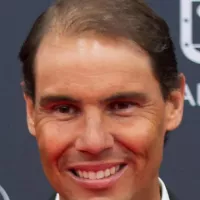
Rafael Nadal a Spanish former professional tennis player achieved the...
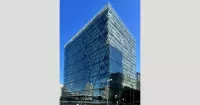
Sony is a Japanese multinational conglomerate based in Tokyo Its...
Qatar is a country located on the Qatar Peninsula in...
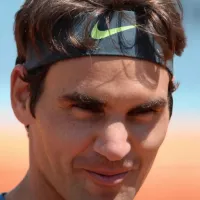
Roger Federer is a retired Swiss professional tennis player widely...
Trending
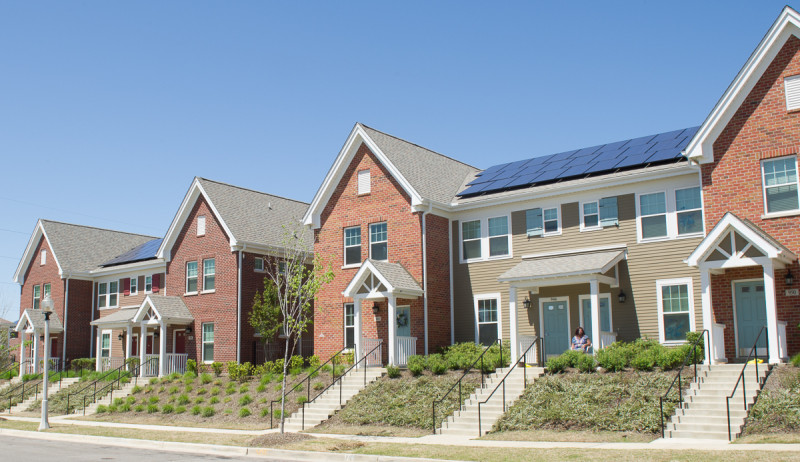
1 month ago Housing Crisis: Americans Face Trade-off Between Affordability and Safety Amidst Rising Prices.
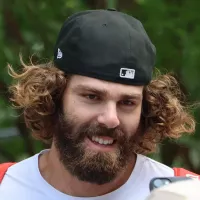
3 months ago ATP Basel Day 2 Predictions: Wawrinka vs Kecmanovic, Mpetshi Perricard vs Fonseca
7 months ago Popyrin Faces Draper at Queen's Club Amidst Murray Flashbacks and Tournament Predictions.
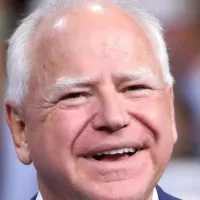
Tim Walz is an American politician educator and Army National Guard veteran currently serving as the st Governor of Minnesota...
2 months ago Blinkova and Salkova to face off at the 2025 Jiangxi Open.

3 months ago Emma Navarro vs. Shuai Zhang: WTA Wuhan Open 2025 Match Prediction and Preview
Popular

Stranger Things created by the Duffer Brothers is a popular...

XXXTentacion born Jahseh Dwayne Ricardo Onfroy was a controversial yet...

Kelsey Grammer is an accomplished American actor producer and singer...

Candace Owens is an American conservative political commentator and author...

Bernie Sanders is a prominent American politician currently serving as...

Melania Trump a Slovenian-American former model has served as First...
